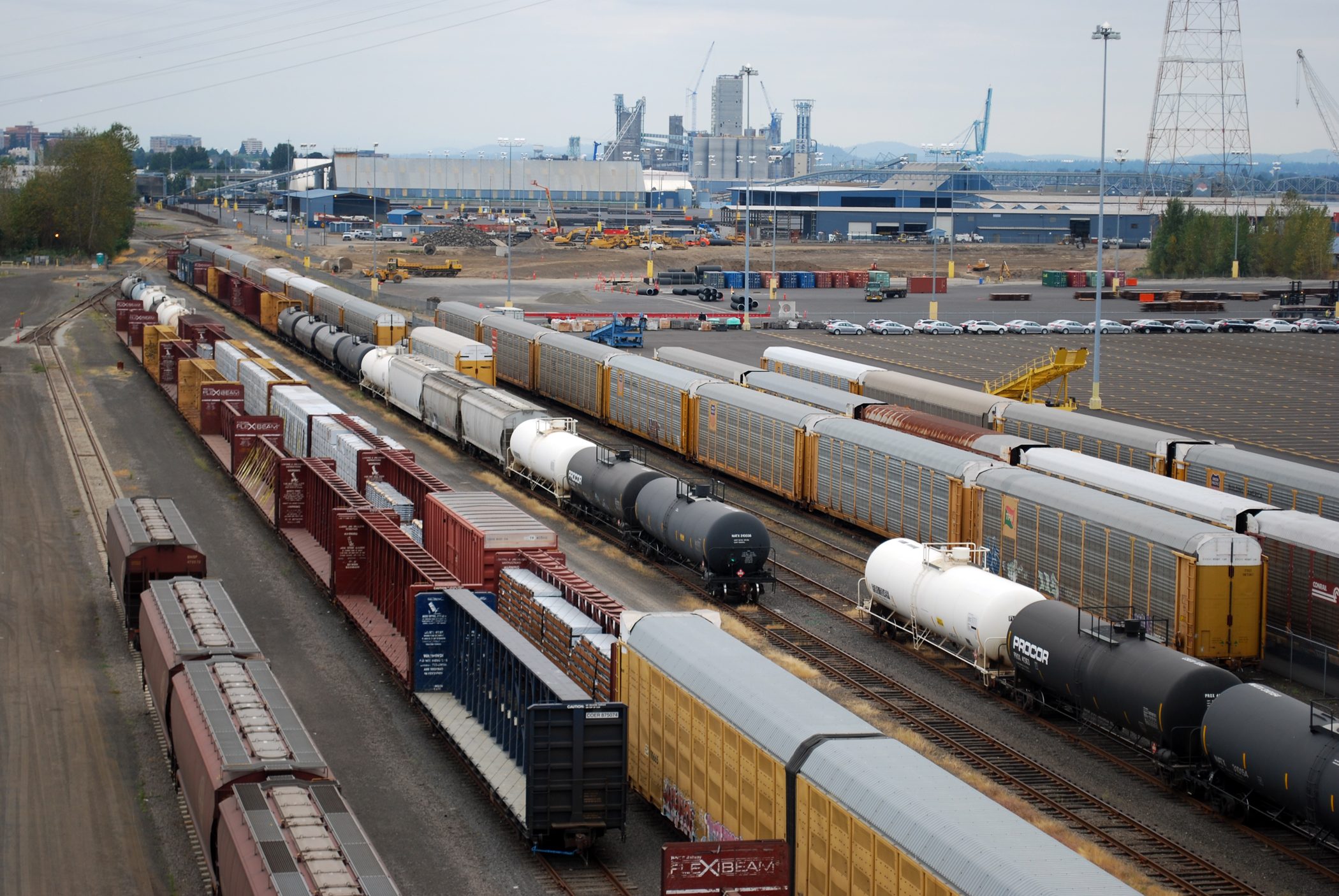Port Tracks National Rail Safety and Oil Spill Response
 Seeking a greater understanding of how hazardous materials, specifically crude oil, are transported along regional rail lines, the Port of Vancouver USA invited Colleen Weatherford, director of public and private partnerships for BNSF Railway; William Ellings, safety and hazmat specialist for the U.S. Department of Transportation, Federal Rail Administration (FRA); and Patrick Brady, assistant director of hazardous materials for BNSF Railway, to a commission workshop held immediately following the board’s regular meeting on Tuesday, June 11.
Seeking a greater understanding of how hazardous materials, specifically crude oil, are transported along regional rail lines, the Port of Vancouver USA invited Colleen Weatherford, director of public and private partnerships for BNSF Railway; William Ellings, safety and hazmat specialist for the U.S. Department of Transportation, Federal Rail Administration (FRA); and Patrick Brady, assistant director of hazardous materials for BNSF Railway, to a commission workshop held immediately following the board’s regular meeting on Tuesday, June 11.
The workshop focused on the emergency response plan BNSF has in place in the event of a spill or other incident, as well as the regulatory process the FRA uses to ensure safe transportation of hazardous materials efficiently along the nation’s rail lines. The June 11 workshop was the second in a series of commission workshops scheduled in response to the recent proposal by the port’s longtime tenant Tesoro to handle North American crude oil at the port. The first workshop was held on May 14 and focused on Marine Safety and Oil Spill Response. Workshops are held regularly to provide information to the port’s three commissioners and are open to the public.
The port’s director of facilities and economic development, Curtis Shuck, made introductory comments prior to the workshop presentations, and both the general public and port commissioners were able to ask questions following the presentation. Click to view the June 11 Rail Operations and Safety Workshop. Read The Columbian’s coverage of the workshop, “Port of Vancouver holds workshop as it weighs Tesoro plan.”
Two additional commission workshops are planned for Thursday, June 27, following the board of commissioners meeting that will begin at 9:30 a.m. at the port offices. Anticipated topics include the permitting process as it relates to the proposed crude oil handling facility and an overarching presentation on the proposed project by the Tesoro-Savage Joint partnership. Interested community members are encouraged to attend.
A few highlights from the June 11 presentations:
BNSF Railway is a leading U.S. railroad with 32,500 route miles in 28 states and two Canadian provinces. 41,000 employees help move approximately 1,400 freight trains carrying materials each day. BNSF moves a quarter of the nation’s rail freight and serves more than 40 ports. Unlike other forms of transportation, BNSF trains operate on an infrastructure financed almost entirely by the railroad. BNSF, who would be the carrier of crude oil from North Dakota to the Port of Vancouver, has helped the industry reduce grade-crossing collision rates by 81 percent, employee injury rates by 82 percent, and train accident rates by 77 percent since 1980. The company has a multi-tiered System Emergency Response Plan to react as quickly as possible in the event of a spill, which includes a water response plan, air monitoring, 60 hazmat responder locations, community training and a robust System Emergency Response Plan. Click to view the presentations by Ms. Weatherford and Mr. Brady.
The Federal Railroad Administration (FRA) is one of several administrations within the U.S. Department of Transportation (USDOT) responsible for transportation safety and security. The role of the FRA is to ensure the safe and secure transportation of hazardous materials transported in commerce by rail within the United States. The FRA Hazardous Materials Division works to reduce societal risks associated with the transportation of hazardous materials by rail through the enforcement of the Federal Hazardous Materials Regulations (HMR). This is done through a variety of compliance tools, including education, site-specific inspections, Railroad System Oversight (RSO) and enforcement. Click to view the presentation by Mr. Ellings.
